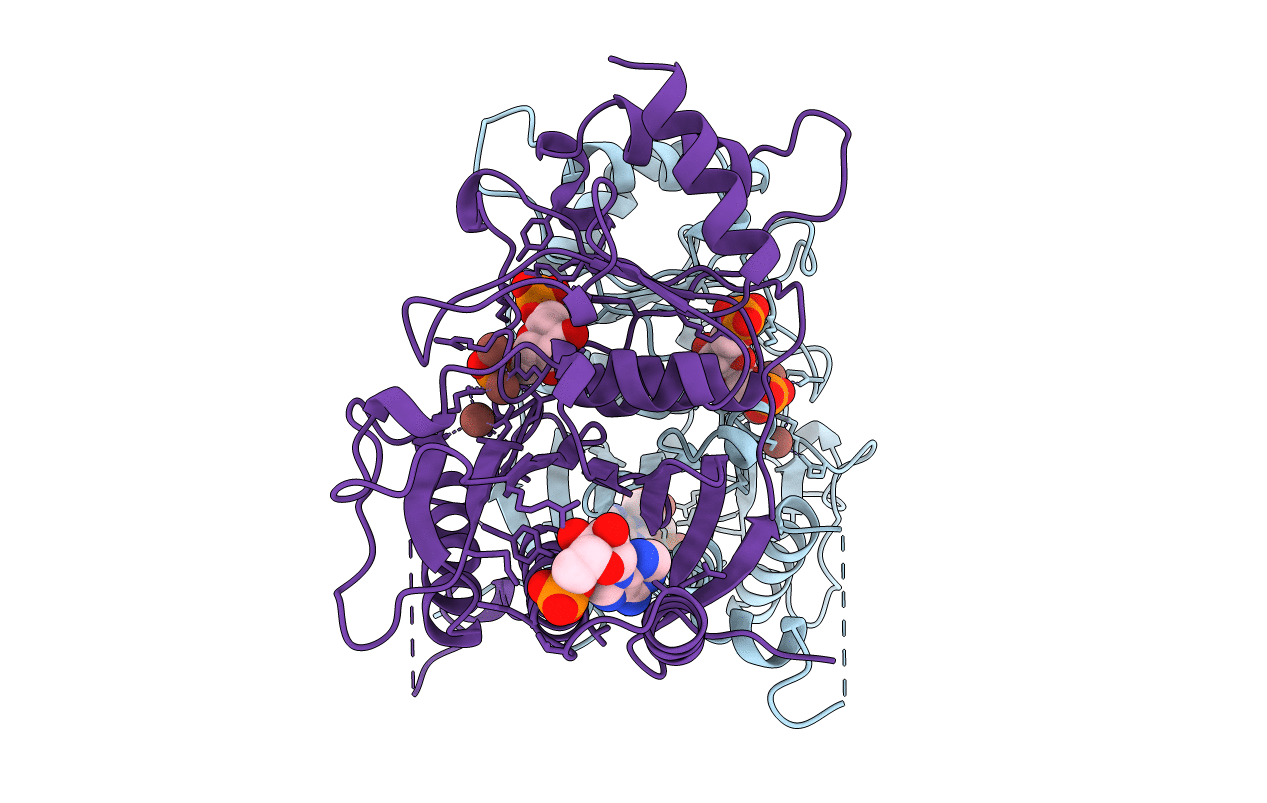Abstact
Fructose-1,6-bisphosphatase (Fru-1,6-Pase; D-fructose-1,6-bisphosphate 1-phosphohydrolase, EC 3.1.3.11) requires two divalent metal ions to hydrolyze alpha-D-fructose 1,6-bisphosphate. Although not required for catalysis, monovalent cations modify the enzyme activity; K+ and Tl+ ions are activators, whereas Li+ ions are inhibitors. Their mechanisms of action are still unknown. We report here crystallographic structures of pig kidney Fru-1,6-Pase complexed with K+, Tl+, or both Tl+ and Li+. In the T form Fru-1,6-Pase complexed with the substrate analogue 2,5-anhydro-D-glucitol 1,6-bisphosphate (AhG-1,6-P2) and Tl+ or K+ ions, three Tl+ or K+ binding sites are found. Site 1 is defined by Glu-97, Asp-118, Asp-121, Glu-280, and a 1-phosphate oxygen of AhG-1,6-P2; site 2 is defined by Glu-97, Glu-98, Asp-118, and Leu-120. Finally, site 3 is defined by Arg-276, Glu-280, and the 1-phosphate group of AhG-1,6-P2. The Tl+ or K+ ions at sites 1 and 2 are very close to the positions previously identified for the divalent metal ions. Site 3 is specific to K+ or Tl+. In the divalent metal ion complexes, site 3 is occupied by the guanidinium group of Arg-276. These observations suggest that Tl+ or K+ ions can substitute for Arg-276 in the active site and polarize the 1-phosphate group, thus facilitating nucleophilic attack on the phosphorus center. In the T form complexed with both Tl+ and Li+ ions, Li+ replaces Tl+ at metal site 1. Inhibition by lithium very likely occurs as it binds to this site, thus retarding turnover or phosphate release. The present study provides a structural basis for a similar mechanism of inhibition for inositol monophosphatase, one of the potential targets of lithium ions in the treatment of manic depression.



